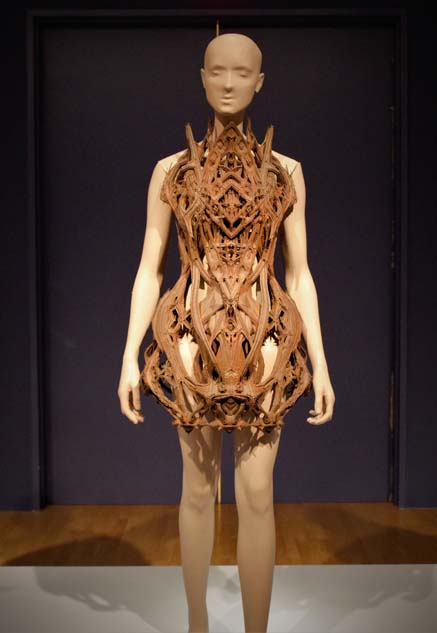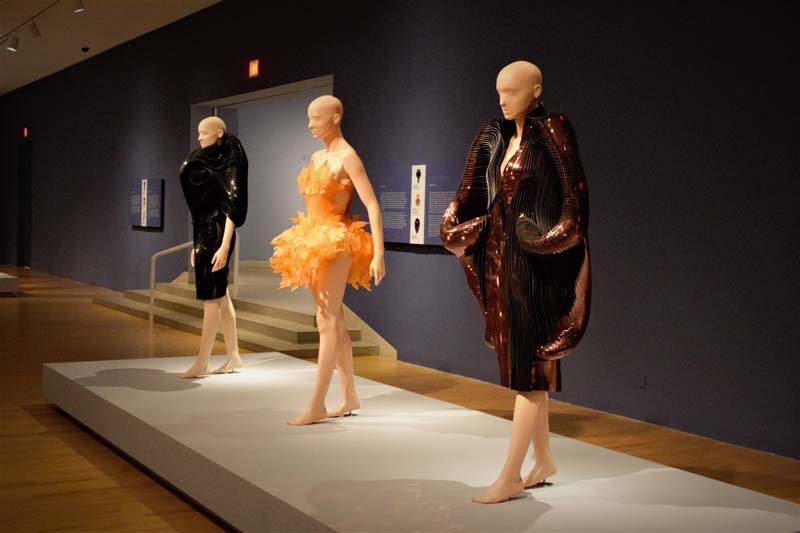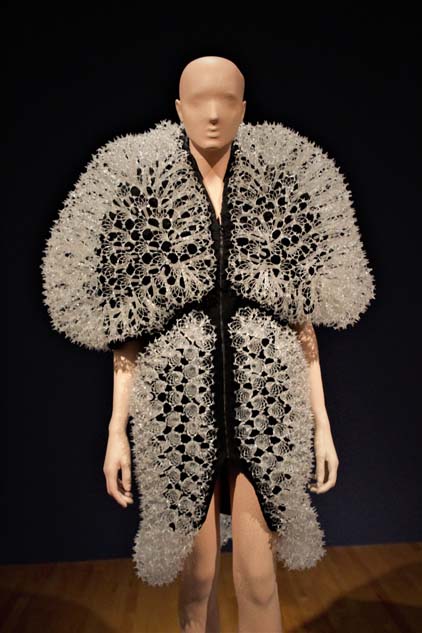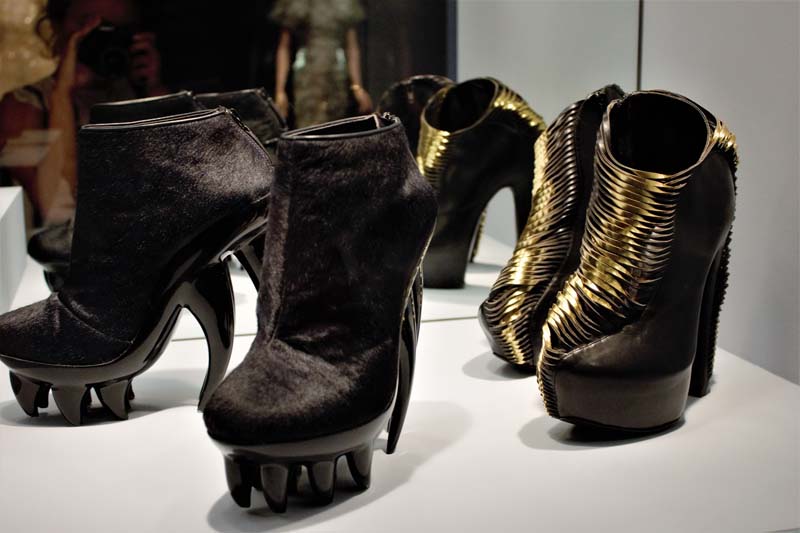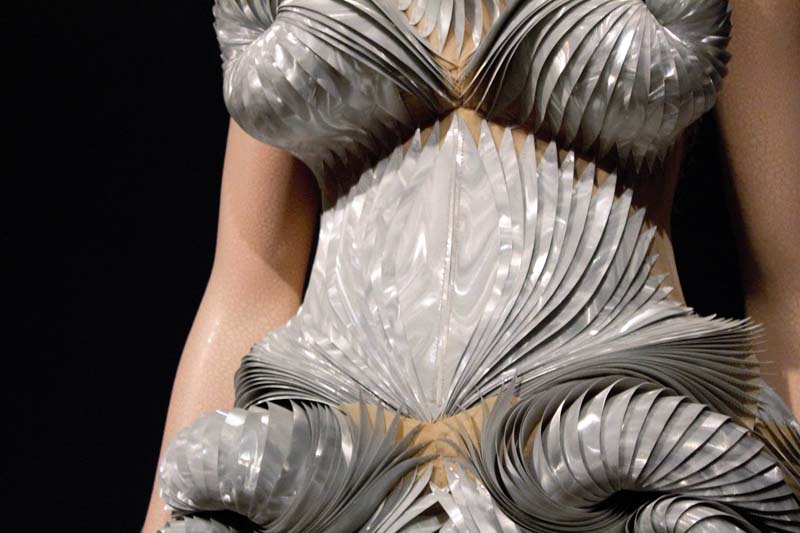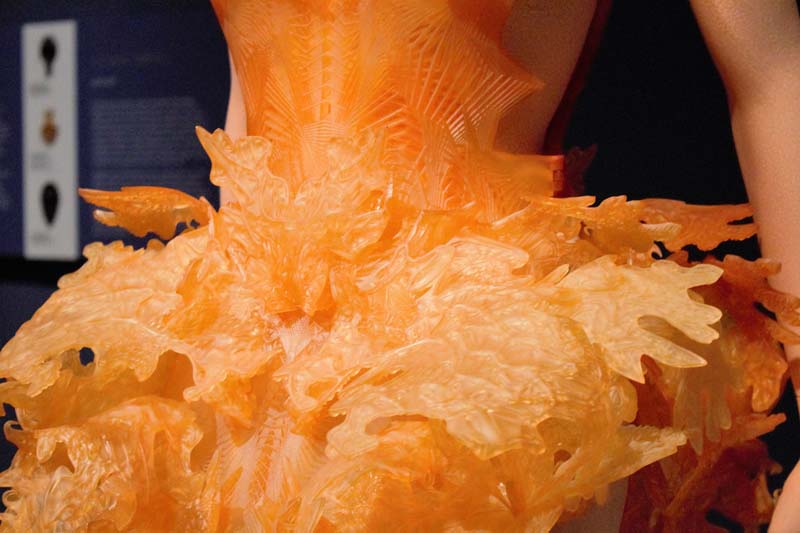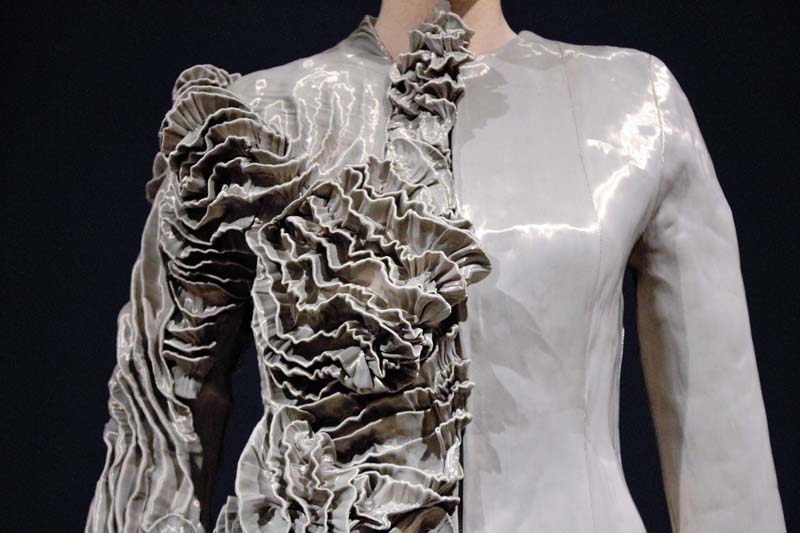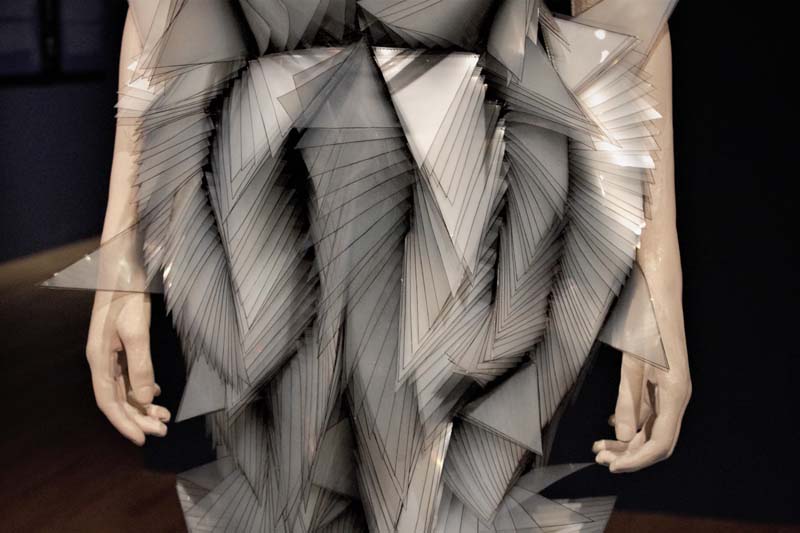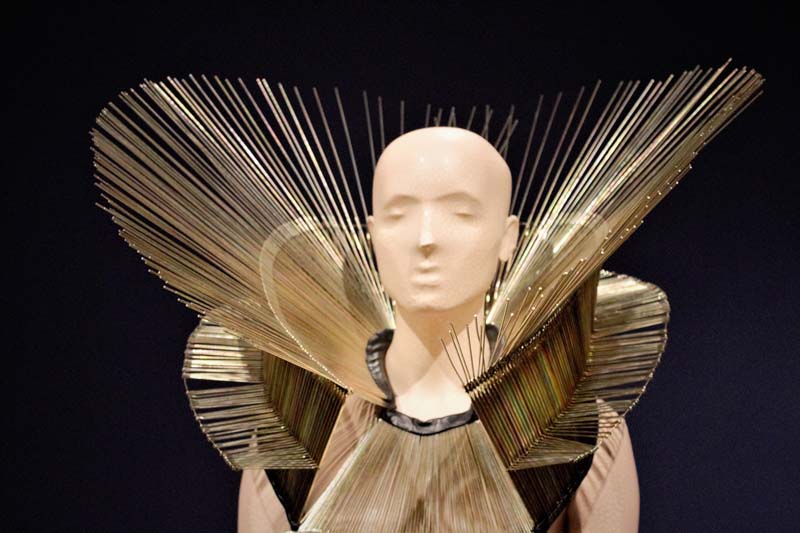How The Iris Van Herpen Exhibit At The Dallas Museum Of Art Incorporates 3-D Printing And Points To The Future Of Fashion Technology.
Few people dress with the mathematical precision of Lady Gaga. OK, maybe she sits alone on that plane.
But fashion designers have progressively gotten more innovative with creating new styles and utilizing techniques that employ materials other than fancy silks.
And 33-year old Dutch fashion designer Iris van Herpen’s ongoing “Transforming Fashion” exhibit at the Dallas Museum of Art highlights just that with her 15 printed creations on display.
The approach van Herpen took shows how 3-D printed designs can fuse conventional with contemporary. The printing technology used in the collection alludes to futuristic ideas and concepts for fashion design.
“I was amazed by the Iris van Herpen exhibition,” says J.C. Bigornia, Manager of Mobile Innovation and 3-D print design educator at the Perot Museum said. “I assume that they are printed piece by piece and put together. I would say it took days upon weeks to finish at least printing the pieces, and to sit there and put them together would take up a lot of time—maybe months just to finish one dress.”
During all that time, van Herpen used various of different systems including a Fused Deposition Modeling printer to render out the bone-like structures of her designs (as pictured) and a Stereolithography printer to create more of her detailed, refined works.
“The pieces made by an FDM printer you can tell right off the bat,” Bigornia says. “So when curating this, Van Herpen used polyamide treated with resin to keep the structure together, therefore ending up with a design made to look like bones.”
A stereolithography printer precisely carves out those intricate details made in a Computer Aided Design (CAD) system 3-D printing.
“FDM printers create an object from top to bottom whereas a [stereolithography] device creates them from beginning to top,” Bigornia says. “SLA printing is all about the details. Any texture or movement you see in a Van Herpen design are made with an SLA device. That’s when you can really tell.”
This novel use of 3-D printing provides a fresh take on a technology that is mainly used for medical science and engineering-oriented practices.
“As well as fashion design, 3-D print designs are used to make prosthetics, basically anything that has to do with the health industry along the lines of orthodontics, even making new organs,” Bigornia said. “There’s also a car company that makes electric 3-D printed cars. You can actually go on their website, design a car, and they can print it for you.”
While revolutionizing industries and enabling farfetched ideas in the realms of art, design and mechanics to come to life, 3-D printing allows fashion to be more than just fabric and needle.
“3-D printing used for toys, and the medical industry is one thing, but when it’s used as another medium to make art, the concepts are endless and can amaze you,” Bigornia says. “Iris Van Herpen took 3-D technology to a whole other level with fashion design.”
“Transforming Fashion” runs until August 20.
All photos by Pauline Esguerra

